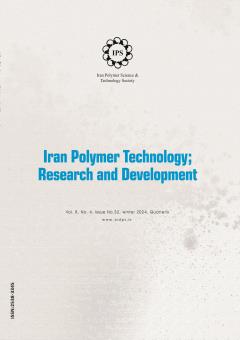Modeling the behavior of polymer matrix composite pipes carrying fluid exposed to hydrocarbon fire
Subject Areas :Alireza Rahimi 1 , Ehsan Selahi 2
1 -
2 -
Keywords: fire, Thermal-mechanical Analysis, polymer matrix composite pipes,
Abstract :
Despite the very good mechanical properties of composite materials, the strength of these materials is not suitable for heat resistance. Therefore, due to the increasing use of composite pipes, especially in the oil, gas and petrochemical industries, fire analysis in these pipes is very important. The most important goal of this research was to investigate the effects of fire on the strength of composite pipes and their failure time by performing a numerical thermal-mechanical analysis for a fluid-carrying composite pipe using MATLAB software. At the first step thermal modeling is carried out and heat distribution, due to the hydro carbonian fire, in the composite pipes is determined in terms of the location and time and then in the mechanical modeling stage, the loss of mechanical properties of the composite pipe due to this increase in temperature is calculated and considering the stresses from the fluid inside the pipe as well as thermal stresses have been created, the total stresses have been calculated. This Thermo-Mechanical model has been validated with the results found in valid articles and used to analyze the behavior of a fluid-carrying composite pipe exposed to hydrocarbon fire. Finally, the Tsai–Wu failure theory was employed to determine the failure time of the pipe in the above-mentioned conditions. By estimating the failure time of the composite pipe, it was possible to determine the pressure bearing capacity and failure time of pressurized composite pipes subjected to fire
-1 سلاحی احسان، مقاومت، عملکرد و مدلسازی سازههای کامپوزیتی در معرض آتش، سازمان چاپ و انتشارات دانشگاه آزاد اسلامی، چاپ اول، مرودشت، 1395. “
2. Gibson AG., Wu YS., Evans JT., Mouritz AP., Laminate Theory Analysis of Composites Under Load in Fire, Journal of Composite Materials, 40, 639-697, 2006.
3. Feih S., Mathys Z., Gibson AG., Mouritz AP., Modelling the Compression Strength of Polymer Laminates in Fire, Composites Part A: Applied Science and Manufacturing, 38, 2354-2365, 2007.
4. Robinson P., Greenhalgh E., Silvestre P., Editors., Failure Mechanisms in Polymer Matrix Composites: Criteria, Testing and Industrial Applications, Cambridge: Woodhead Publishing, England, 2012.
5. Luo C., Lua J., DesJardin PE., Thermo-Mechanical Damage Modeling of Polymer Matrix Sandwich Composites in Fire, Composites Part A: Applied Science and Manufacturing, 43, 814-821, 2012.
6. Anjang A., Chevali VS., Lattimer BY., Case SW., Feih S., Mouritz AP., Post-Fire Mechanical Properties of Sandwich Composite Structures, Composite Structures, 132, 1019-1028, 2015.
7. Rizk G., Legrand V., Khalil K., Casari P., Jacquemin F.,
Durability of Sandwich Composites Under Extreme Conditions: Towards the Prediction of Fire Resistance Properties Based on Thermo-Mechanical Measurements, Composite Structures, 186, 233-245, 2018.
8. Sepehri A., Selahi E., Damage Evaluation of Protected and Non-Protected Composite Sandwich Panels with Insulation Subjected to Fire and Impact Loads, Iranian Journal of Science and Technology: Transactions of Mechanical Engineering, 44, 333-345, 2020.
9. Selahi E., Setoodeh A.R., Tahani M., Failure Analysis of Fiber Glass-Vinylester Composite Cylinders Subjected to Fire and Asymmetric Transient Pressure, Polymer Composites, 42, 5607–5623, 2021.
10. Nguyen Q., Tran J., Ren X., Zhang G., Mendis P., Fire Performance of Maritime Composites, Cambridge: Woodhead Publishing, England, 2019.
11. Zhang Z, Thermo-Mechanical Behavior of Polymer Composites Exposed to Fire, Virginia Tech, USA, 2010.
12. Fire Tests on Building Materials and Structures, British Standards Institution BS 476, Part 20, 1987.
13. Kaw AK., Mechanics of Composite Materials, CRC press, USA, 2006.

